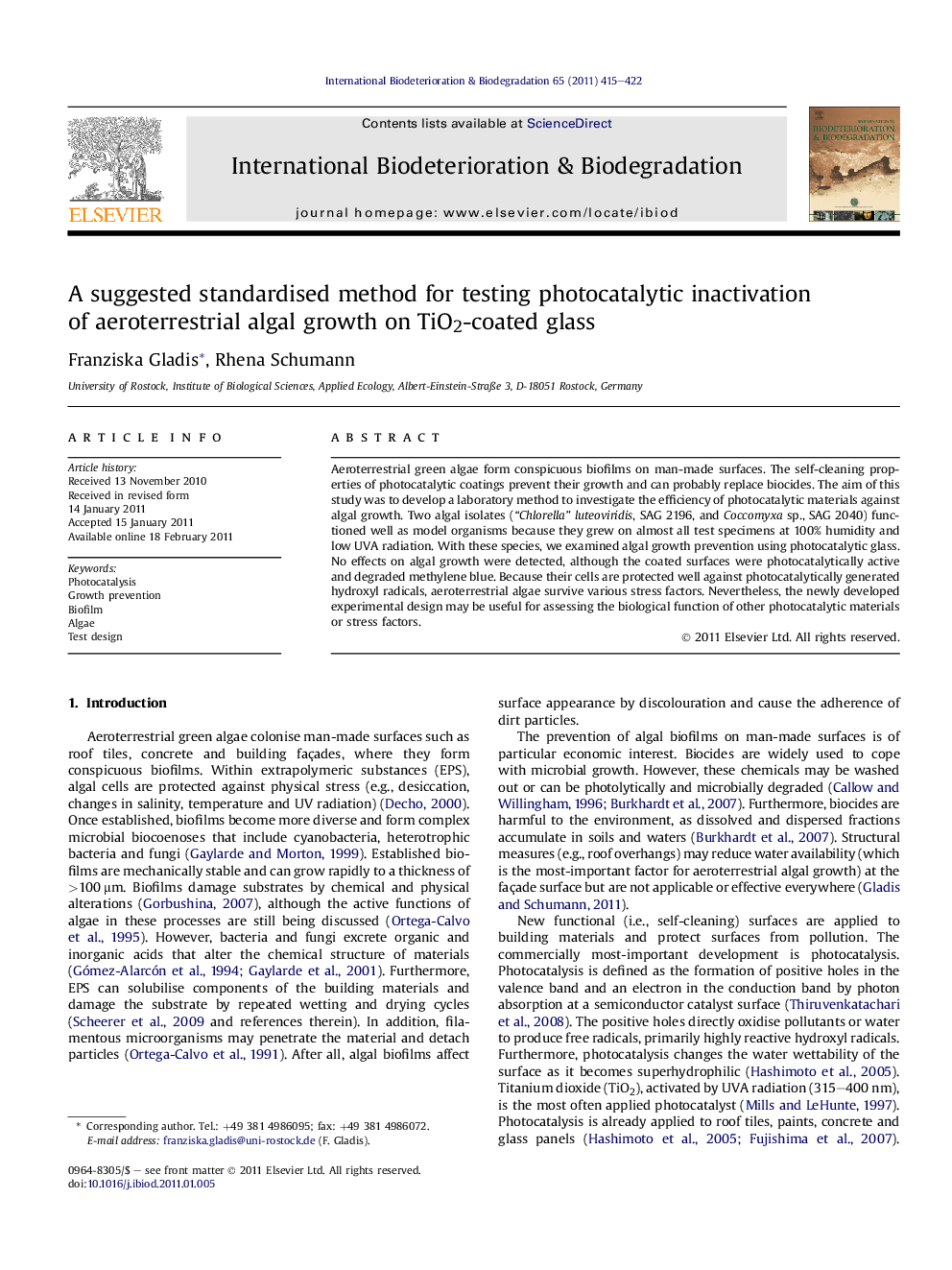| Article ID | Journal | Published Year | Pages | File Type |
|---|---|---|---|---|
| 4365484 | International Biodeterioration & Biodegradation | 2011 | 8 Pages |
Abstract
Aeroterrestrial green algae form conspicuous biofilms on man-made surfaces. The self-cleaning properties of photocatalytic coatings prevent their growth and can probably replace biocides. The aim of this study was to develop a laboratory method to investigate the efficiency of photocatalytic materials against algal growth. Two algal isolates (“Chlorella” luteoviridis, SAG 2196, and Coccomyxa sp., SAG 2040) functioned well as model organisms because they grew on almost all test specimens at 100% humidity and low UVA radiation. With these species, we examined algal growth prevention using photocatalytic glass. No effects on algal growth were detected, although the coated surfaces were photocatalytically active and degraded methylene blue. Because their cells are protected well against photocatalytically generated hydroxyl radicals, aeroterrestrial algae survive various stress factors. Nevertheless, the newly developed experimental design may be useful for assessing the biological function of other photocatalytic materials or stress factors.
Related Topics
Life Sciences
Environmental Science
Environmental Science (General)
Authors
Franziska Gladis, Rhena Schumann,
